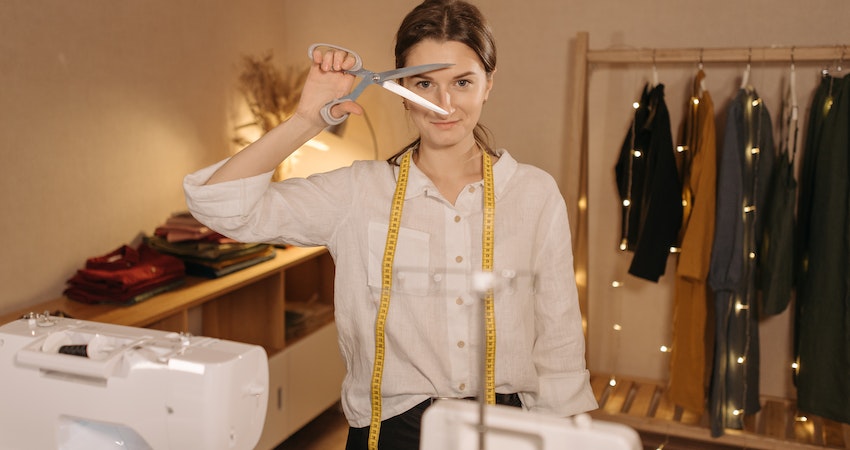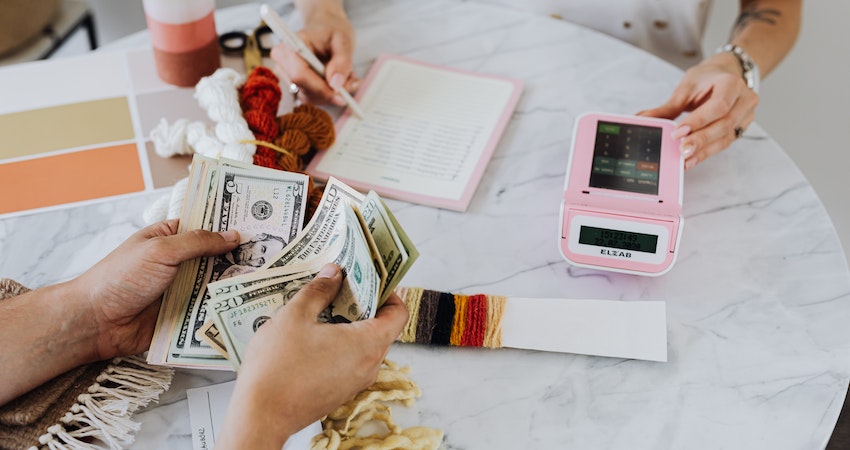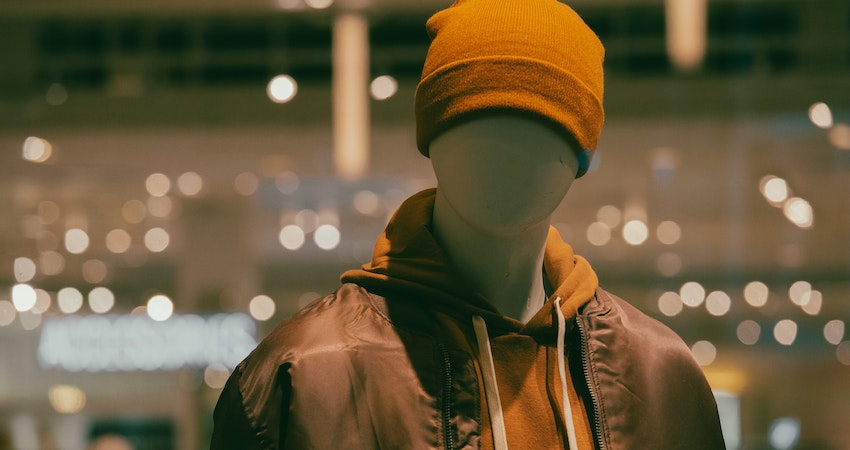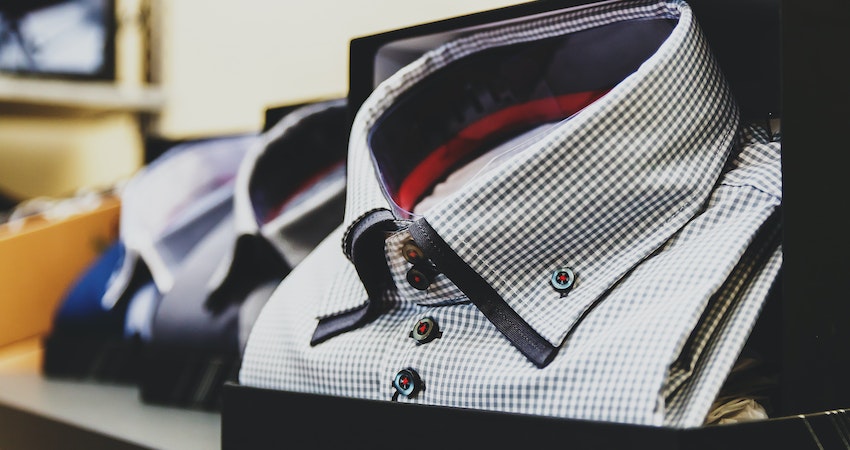Introduction
Custom clothing has become increasingly popular in recent years, with more and more people looking for unique and personalized pieces to add to their wardrobe. This trend has also extended to startups and small businesses, who are now seeking out custom clothing manufacturers to create their own branded apparel. In this article, we’ll explore the world of trendy custom clothing manufacturers and how they can help bring your fashion ideas to life.
The Rise of Custom Clothing
The rise of custom clothing has ushered in a new era of personalization and self-expression in the fashion industry. With advancements in technology, shifting consumer preferences, and a desire for unique and individualized fashion choices, custom clothing has gained immense popularity. In this article, we will explore the factors contributing to the rise of custom clothing, the benefits it offers to consumers and businesses, and its impact on the fashion landscape.
Individual Expression:
In an age of mass production and fast fashion, many consumers are seeking ways to express their individuality. Custom clothing allows people to have a unique fashion statement that aligns with their personal style, values, and interests.
Sustainability:
Increasing awareness of the environmental and ethical concerns associated with the fast fashion industry has led consumers to seek more sustainable and responsible alternatives. Custom clothing often involves made-to-order production, reducing waste and overproduction.
Better Fit:
One of the primary appeals of custom clothing is the perfect fit. People come in all shapes and sizes, and off-the-rack clothing often fails to provide the ideal fit. Custom clothing manufacturers create garments tailored to the individual’s specific measurements, ensuring a comfortable and flattering fit.
Quality and Durability:
Custom clothing often prioritizes quality over quantity. Consumers are willing to invest in pieces that will last, both in terms of durability and style. Custom clothing manufacturers tend to use higher-quality materials and craftsmanship, leading to longer-lasting garments.
Unique Branding:
Many fashion brands and designers are turning to custom clothing to build a unique brand identity. By offering customizable options, they stand out in a crowded market and cater to consumers who are looking for something distinctive.
Celebrity Influence:
Celebrities and influencers often showcase their custom-made outfits on social media and at high-profile events, which has a significant impact on consumer behavior. People want to emulate the styles of their favorite icons, and custom clothing allows them to do so.
Technology Advancements:
Advancements in technology have made it easier for consumers to design and order custom clothing. Online platforms and software enable individuals to customize their clothing, from selecting fabrics to adding unique designs and patterns.
Economic Factors:
The rising popularity of custom clothing has spurred the growth of smaller, local clothing manufacturers and designers. This has created job opportunities and contributed to the local economy, which is particularly important in light of recent economic challenges.
Experiences Over Products:
Today’s consumers are more interested in experiences than possessions. The process of designing and ordering custom clothing is an experience in itself, offering a sense of creative fulfillment and a unique journey that extends beyond just purchasing a product.
Cultural Diversity:
The United States is known for its cultural diversity, and this is reflected in the demand for custom clothing. People from various cultural backgrounds often seek clothing that reflects their heritage, traditions, and values, leading to a demand for custom-made cultural attire.
In conclusion, the demand for custom clothing in the USA is driven by a desire for individuality, sustainability, quality, and the ability to express oneself. Custom clothing offers consumers a way to align their clothing choices with their values, while also contributing to the shift towards a more sustainable and responsible fashion industry. This trend is likely to continue as consumers seek personalized, high-quality fashion solutions.
Table of Contents
Choosing the Right Custom Clothing Manufacturer
When it comes to making a mark in the fashion industry or curating your personal style, the choice of the right custom clothing manufacturer is a pivotal decision. In a world that increasingly values uniqueness and sustainability, finding a manufacturer that aligns with your vision can make all the difference. This guide delves into the essential steps and considerations for selecting the perfect partner to bring your custom clothing creations to life. From quality and ethics to budgeting and scalability, we’ll walk you through the critical factors that will help you make an informed choice and embark on a successful custom clothing journey.

Define Your Requirements and Goals:
- Clearly outline your specific needs, such as the type of clothing, quantity, quality standards, and budget constraints.
- Set realistic goals and expectations for your project, taking into account factors like lead time and design complexity.
Research Potential Manufacturers:
- Start by researching custom clothing manufacturers in the USA. Utilize online directories, trade shows, industry associations, and recommendations from peers.
- Pay attention to their specialties, production capabilities, and any certifications they may hold.
Quality and Reputation:
- Investigate the reputation of potential manufacturers. Look for online reviews, testimonials, and case studies. Reach out to past clients if possible.
- Assess their quality control processes, including the materials they use and the craftsmanship of their products.
Ethical and Sustainable Practices:
- Consider the manufacturer’s commitment to ethical and sustainable practices. Are they environmentally responsible? Do they treat their workers fairly?
- Certifications like Fair Trade or GOTS (Global Organic Textile Standard) can be indicators of ethical manufacturing.
Visit the Facility:
- Whenever possible, arrange a visit to the manufacturer’s facility. This provides an opportunity to assess the working conditions, quality control measures, and overall operations.
Communication and Collaboration:
- Effective communication is crucial. Ensure that the manufacturer understands your specific requirements, design preferences, and deadlines.
- A willingness to collaborate and offer design advice can be a valuable trait in a manufacturer.
Pricing and Budget:
- Get detailed price quotes from multiple manufacturers. Pay attention to hidden fees or additional costs.
- Balance cost with quality, ensuring that you’re not compromising on the latter to save money.
Turnaround Time:
- Discuss production lead times and ensure they align with your project’s timeline. Manufacturers with shorter lead times may be more suitable for fast-moving fashion trends.
Samples and Prototypes:
- Request samples or prototypes before committing to a large production run. This allows you to assess the quality and make any necessary adjustments.
Scalability:
- Consider whether the manufacturer can handle your production volume as your business grows. Ensure they can scale up or down as needed.
Intellectual Property and Contracts:
- Clearly outline ownership of designs, patterns, and any proprietary information in the contract.
- Ensure that the terms of the agreement are fair and protect your interests.
Customer Support and Service:
- Evaluate the responsiveness and reliability of the manufacturer’s customer support. This will be important during the production process.
- Inquire about their process for addressing any issues or defects in the clothing
Location:
- Consider the geographical location of the manufacturer. Proximity can be advantageous for easier communication, quality control visits, and reduced shipping costs.
Legal Compliance:
- Ensure the manufacturer complies with all relevant local, state, and federal regulations, such as labor laws, safety standards, and intellectual property rights.
References and Recommendations:
- Don’t hesitate to ask for references or recommendations from other clients who have worked with the manufacturer.
In summary, choosing the right trendy custom clothing manufacturers in the USA involves thorough research, clear communication, and attention to factors such as quality, ethical practices, pricing, and scalability. By conducting due diligence and making informed decisions, you can establish a productive and successful partnership with a manufacturer that meets your specific needs and goals.
Types of Custom Clothing
Custom clothing has gained immense popularity in recent years, allowing individuals and businesses to express their unique styles and create personalized apparel. Whether you’re a fashion enthusiast looking for one-of-a-kind pieces or a brand aiming to create a distinct identity, custom clothing offers endless possibilities. In this article, we will explore the various types of custom clothing available, highlighting their features, advantages, and popular use cases.
Custom T-Shirts
- The classic and versatile option for customization
- Ideal for personal expression, events, promotional purposes, and team uniforms
- Options for printing, embroidery, and various design elements
Custom Hoodies and Sweatshirts
- Perfect for cooler weather and casual wear
- Popular among sports teams, school organizations, and fashion-forward individuals
- Embroidery, screen printing, and appliqué are common customization methods
Custom Jackets and Outerwear
- Provides warmth and protection while showcasing personal style
- Embroidery, patches, and printed designs are common customization options
- Suitable for personal use, corporate branding, and team uniforms
Custom Caps and Hats
- Adds a stylish touch to any outfit
- Ideal for promotional events, sports teams, and personalized gifts
- Embroidery, heat transfer, and screen printing are popular customization techniques
Custom Dresses and Skirts
- Allows for unique and tailored designs
- Popular for special occasions, weddings, and fashion-forward individuals
- Options for fabric selection, embellishments, and custom patterns
Custom Activewear and Sports Apparel
- Designed for optimal performance and comfort
- Preferred by fitness enthusiasts, sports teams, and athletic organizations
- Moisture-wicking fabrics, sublimation printing, and custom logos are common features
Custom Workwear and Uniforms
- Represents a brand’s identity and fosters a sense of unity
- Commonly used in corporate settings, service industries, and schools
- Options for embroidery, screen printing, and custom color schemes
Custom Accessories
- Complements custom clothing and adds a personal touch
- Includes items such as bags, scarves, socks, and face masks
- Various customization techniques, including printing and embroidery
Conclusion
Custom clothing (Trendy Custom Clothing Manufacturers) provides a platform for self-expression, brand promotion, and unique fashion statements. From custom t-shirts to accessories, the options are limitless. Whether you’re an individual looking to showcase your personal style or a brand aiming to create a cohesive identity, custom clothing allows you to stand out from the crowd. By exploring the various types of custom clothing available and harnessing the power of customization techniques, you can create garments that are truly one-of-a-kind. So, embrace the world of custom clothing and let your creativity soar.
Custom Clothing Trends in the USA
The fashion industry is ever-evolving, with trends shifting and styles emerging constantly. Custom clothing has become a prominent trend in recent years, allowing individuals to express their unique style and create personalized garments. In this article, we will explore the custom clothing trends that have been making waves in the USA. From streetwear to sustainable fashion, these trends reflect the desire for individuality, sustainability, and fashion-forward choices.
Streetwear and Athleisure
- The rise of streetwear has had a significant influence on custom clothing trends.
- Athleisure, the merging of athletic and leisurewear, has become a popular style.
- Custom streetwear brands offer unique designs, personalized logos, and limited edition pieces.
- Customized jerseys, hoodies, and sneakers are favored by streetwear enthusiasts.
Sustainable Custom Clothing
- The growing focus on sustainability has extended to custom clothing.
- Consumers are increasingly conscious of the environmental impact of the fashion industry.
- Custom clothing brands are adopting eco-friendly practices such as using organic and recycled materials.
- Customization techniques such as eco-friendly printing and dyeing methods are gaining popularity.
Minimalist and Timeless Designs
- Minimalist designs have gained popularity in custom clothing trends.
- Clean lines, neutral colors, and classic styles are favored by individuals seeking timeless pieces.
- Custom clothing manufacturers offer options for minimalist designs, allowing for personalized touches within a minimal aesthetic.
Gender-Inclusive Custom Clothing
- The fashion industry is becoming more inclusive, and custom clothing follows suit.
- Gender-neutral and gender-inclusive designs are gaining traction.
- Custom clothing brands offer options for customized fits and designs that cater to all genders.
Retro and Vintage-Inspired Custom Clothing
- Nostalgia and retro-inspired fashion have made a comeback in recent years.
- Custom clothing trends include vintage-inspired designs and customization techniques such as distressing and retro graphics.
- Customized denim jackets, band tees, and retro sportswear are popular choices.
Personalized Activewear
- As fitness and wellness continue to be integral parts of people’s lives, personalized activewear has become a trend.
- Custom sports bras, leggings, and performance tops with personalized designs and logos are in demand.
- Athletes, fitness enthusiasts, and sports teams opt for custom activewear that represents their unique style and team spirit.
Conclusion
Custom clothing trends in the USA reflect the desire for individuality, sustainability, and fashion-forward choices. From streetwear and athleisure to sustainable fashion and minimalist designs, custom clothing offers endless possibilities for personal expression. Whether you’re seeking a retro-inspired look or gender-inclusive designs, custom clothing manufacturers cater to diverse preferences and styles. By embracing these custom clothing trends, individuals can create garments that not only reflect their unique style but also contribute to a more sustainable fashion future.
The Custom Clothing Manufacturing Process
Introduction
Custom clothing manufacturing has revolutionized the fashion industry, allowing individuals and businesses to bring their unique designs to life. From concept to production, the custom clothing manufacturing process involves several stages of precision and craftsmanship. In this article, we will explore the step-by-step process of manufacturing custom clothing, providing insights into the intricate journey of transforming raw materials into high-quality garments.

Design Conceptualization
- The first step in the custom clothing manufacturing process is conceptualizing the design.
- Whether it’s an individual’s vision or a brand’s identity, the design concept is developed.
- This involves sketching, creating mood boards, or using design software to visualize the garment.
Fabric and Material Selection
- Once the design concept is finalized, the next step is selecting the appropriate fabrics and materials.
- Factors such as desired aesthetics, functionality, and sustainability are considered.
- Custom clothing manufacturers provide a range of fabric options and can assist in selecting the most suitable materials.
Pattern Making and Grading
- Pattern-making is crucial in custom clothing manufacturing.
- Skilled pattern makers create the templates for each component of the garment.
- Grading, the process of scaling the patterns to different sizes, ensures consistency across various sizes.
Sample Creation and Fitting
- Before proceeding to bulk production, a sample garment is created.
- The sample is used to assess the design, fit, and overall quality of the garment.
- Fitting sessions allow for any necessary adjustments to be made to achieve the desired fit and comfort.
Cutting and Marking
- Once the sample is approved, the production process begins with cutting and marking the fabric.
- The fabric is measured, marked, and then carefully cut following the patterns created.
- Precision cutting is essential to ensure accurate assembly during the sewing stage.
Sewing and Construction
- The sewing stage involves assembling the fabric pieces to create the final garment.
- Skilled garment workers stitch the fabric together using advanced sewing machines.
- Attention to detail, quality control, and adherence to the design specifications are paramount during this stage.
Embellishments and Customization
- Depending on the design requirements, embellishments and customizations are added.
- This can include embroidery, printing, appliqué, and other techniques to enhance the garment’s aesthetic appeal.
- Skilled artisans or specialized machines are employed to incorporate these customizations.
Quality Control and Inspection
- Throughout the manufacturing process, rigorous quality control measures are implemented.
- Garments are inspected at various stages to ensure they meet the highest standards of quality.
- This includes checking for stitching integrity, color consistency, proper sizing, and overall craftsmanship.
Packaging and Labeling
- Once the garments pass the quality control stage, they are carefully packaged and labeled.
- Packaging methods may vary based on the garment type and client’s preferences.
- Labels, hang tags, and other branding elements are added to provide information and enhance the brand’s identity.
Shipping and Delivery
- The final step in the custom clothing manufacturing process is shipping and delivery.
- Garments are carefully packed and shipped to their final destination, ready to be worn or sold.
- Custom clothing manufacturers work closely with logistics partners to ensure timely and secure delivery.
Conclusion
The custom clothing manufacturing process involves a precise and intricate journey from design conceptualization to final delivery. Each stage, from fabric selection to quality control, requires skilled craftsmanship and attention to detail. Custom clothing manufacturers play a crucial role in bringing unique designs to life, ensuring that garments are produced with utmost precision and quality. By understanding the custom clothing manufacturing process, individuals and businesses can appreciate the artistry and effort involved in creating custom-made garments that reflect their vision and style.
Popular Custom Clothing Manufacturers in the USA
There are several popular custom clothing manufacturers in the USA that cater to a wide range of needs and styles. Here are some well-known custom clothing manufacturers, each with its own specialties and strengths:
Apliiq:
- Specializes in unique fabric applications, including custom labels, patches, and embroidery.
- Offers a variety of creative options for customizing clothing.
A Cut Above Uniforms:
- Focuses on custom workwear, uniforms, and apparel for various industries.
- Known for quality and durability in work clothing.
The/Studio:
- Offers custom clothing and promotional products, including shirts, jackets, and accessories.
- Provides an easy-to-use online platform for designing and ordering custom products.
Nevear:
- An on-demand custom clothing manufacturer that allows you to create and sell your designs through an e-commerce platform.
- Offers a wide range of apparel and print-on-demand services.
Ampersand Printing:
- Specializes in screen printing and embroidery services for custom clothing.
- Known for quality printing on a variety of garments.
Art of Where:
- Focuses on custom apparel and accessories, including activewear, scarves, and bags.
- Offers the option to print your own designs.
BELLA+CANVAS:
- Known for producing high-quality blank apparel, which you can then customize.
- Offers a range of trendy and sustainable clothing options.
The RealReal:
- A luxury consignment marketplace where you can find high-end custom clothing and designer pieces.
- Offers a selection of one-of-a-kind, custom-designed items.
Green Label Organic:
- A sustainable custom clothing manufacturer that uses organic and eco-friendly materials.
- Specializes in custom-printed organic T-shirts and apparel.
TSC Apparel:
- A distributor of blank apparel and promotional products that you can customize.
- Offers a wide selection of brands and styles for customization.
CustomInk:
- Provides customized apparel and promotional products for businesses, events, and individuals.
- Known for its user-friendly online design tool.
American Apparel:
- Offers custom clothing manufacturing services with a focus on trendy, fashion-forward designs.
- Known for its made-in-the-USA products.
Cost Estimation and Budgeting
Introduction
Cost estimation and budgeting are crucial aspects of any project, including custom clothing manufacturing. Whether you’re a startup looking to create your own branded apparel or an individual interested in designing custom garments, understanding the costs involved and creating a budget is essential. In this article, we will explore the factors to consider when estimating costs for custom clothing and provide insights into budgeting effectively for your custom clothing project.

Design Complexity and Materials
- The complexity of the design plays a significant role in cost estimation.
- Intricate designs with unique patterns, multiple embellishments, or specialized techniques require more labor and materials, increasing the overall cost.
- The choice of materials also impacts the cost, as high-quality fabrics and custom materials may be more expensive than standard options.
Quantity and Scale
- The quantity of garments to be produced affects the cost per unit.
- Manufacturers often offer volume discounts for larger orders, reducing the overall cost.
- Consider your desired scale, whether it’s a small batch or a large production run, and factor that into your cost estimation.
Customization and Embellishments
- Customizations such as embroidery, printing techniques, and additional embellishments add to the overall cost.
- The complexity of the customizations and the materials used will impact the final price.
- Consider the level of customization you desire and include it in your cost estimation and budgeting.
Labor and Production Costs
- The labor and production costs are significant factors to consider.
- Skilled artisans and garment workers are essential for creating custom clothing, and their expertise comes at a cost.
- Production costs encompass cutting, sewing, quality control, and other manufacturing processes.
Packaging and Shipping
- Packaging and shipping costs are also significant factors to consider.
- Packaging and shipping costs will impact the final price.
Conclusion
Estimating costs and budgeting effectively for custom clothing manufacturing is essential for a successful project. By considering factors such as design complexity, materials, quantity, customization, labor costs, packaging, shipping, and additional expenses, you can develop a comprehensive understanding of the financial aspects of your project. Researching and obtaining quotes from multiple manufacturers enables you to make informed decisions and select a manufacturer that aligns with your budget while delivering the desired quality. By carefully considering and managing the costs, you can ensure a smooth and successful custom clothing manufacturing process.
Tips for a Successful Collaboration
Introduction
Collaborating with custom clothing manufacturers is a key aspect of bringing your vision to life and ensuring a successful custom clothing project. Effective collaboration fosters open communication, enhances the quality of the final product, and streamlines the manufacturing process. In this article, we will provide essential tips for a successful collaboration with custom clothing manufacturers, helping you navigate the process and achieve the desired outcomes.
Clearly Communicate Your Vision
- Clearly articulate your vision for the custom clothing project to the manufacturer.
- Provide detailed descriptions, sketches, mood boards, or reference samples to convey your ideas effectively.
- Discuss your expectations regarding design, fit, materials, customization, and any specific requirements.
Establish a Collaborative Relationship
- Foster a collaborative relationship with the custom clothing manufacturer.
- Be open to suggestions, feedback, and input from the manufacturer’s expertise.
- Encourage a two-way dialogue where ideas can be exchanged and improvements can be made.
Set Realistic Timelines and Deadlines
- Set realistic timelines and deadlines for each stage of the collaboration process.
- Consider factors such as design approval, sample creation, production, and shipping.
- Allow for flexibility, and understanding that unforeseen challenges may arise that require adjustments to the timeline.
Regularly Communicate and Provide Feedback
- Maintain regular communication with the custom clothing manufacturer throughout the collaboration.
- Provide timely feedback on samples, design revisions, and any other updates.
- Address any concerns or issues promptly, ensuring they are resolved in a timely manner.
Prioritize Quality Control
- Emphasize the importance of quality control throughout the collaboration process.
- Collaborate with the manufacturer to establish quality control measures that align with your expectations and standards.
- Regularly review and inspect samples and final products to ensure they meet the desired quality.
Be Mindful of Budget Constraints
- Stay mindful of your budget constraints and discuss them openly with the custom clothing manufacturer.
- Seek cost-effective solutions without compromising on quality and design.
- Transparently communicate any budget adjustments or limitations to manage expectations effectively.
Embrace Flexibility and Adaptability
- Embrace flexibility and adaptability throughout the collaboration process.
- Understand that adjustments and revisions may be necessary for a successful outcome.
- Be open to exploring alternative solutions and compromising when needed.
Celebrate and Recognize Achievements
- Celebrate milestones and achievements throughout the collaboration process.
- Acknowledge the manufacturer’s contributions and express appreciation for their efforts.
- Foster a positive working relationship that values and recognizes the collective achievements.
Conclusion
A successful collaboration with custom clothing manufacturers requires effective communication, a collaborative mindset, and an understanding of the manufacturing process. By clearly communicating your vision, establishing a collaborative relationship, setting realistic timelines, providing regular feedback, prioritizing quality control, being mindful of budget constraints, embracing flexibility, and recognizing achievements, you can foster a successful collaboration that brings your custom clothing project to life. Remember, a strong partnership and open communication will help you navigate challenges, achieve the desired results, and ensure a seamless and satisfying collaboration experience.
Marketing and Selling Custom Clothing
Introduction
Marketing and selling custom clothing is an essential aspect of building a successful brand and reaching your target audience. Whether you’re a startup launching your own custom clothing line or an individual looking to sell personalized garments, a strategic marketing approach is crucial to attract customers and generate sales. In this article, we will explore effective strategies for marketing and selling custom clothing, helping you promote your brand, connect with your audience, and boost your sales.

Define Your Target Audience
- Start by clearly defining your target audience for your custom clothing.
- Understand their demographics, interests, preferences, and purchasing behavior.
- This knowledge will guide your marketing efforts and allow you to tailor your messaging accordingly.
Build an Engaging Brand
- Develop a strong and cohesive brand identity that resonates with your target audience.
- Create a compelling brand story and communicate your unique value proposition.
- Consistently apply your brand identity across all marketing channels and touchpoints.
Create a User-Friendly E-Commerce Website
- Establish an e-commerce website that showcases your custom clothing collection.
- Design a user-friendly interface with easy navigation and a visually appealing layout.
- Optimize your website for mobile devices to capture customers browsing on smartphones and tablets.
Utilize Social Media Marketing
- Leverage social media platforms to reach and engage with your target audience.
- Identify the most relevant platforms for your brand, such as Instagram, Facebook, and Pinterest.
- Regularly post high-quality images of your custom clothing, share customer testimonials, and run promotions to drive engagement and sales.
Collaborate with Influencers
- Partner with influencers who align with your brand and target audience.
- Collaborate on sponsored content, product reviews, or giveaways to increase brand visibility.
- Leveraging their social media presence and influence can help expand your reach and attract potential customers.
Implement Search Engine Optimization (SEO) Strategies
- Optimize your website and content for search engines to improve your online visibility.
- Conduct keyword research and incorporate relevant keywords into your website copy and product descriptions.
- Regularly update your blog with informative and shareable content related to custom clothing and fashion.
Offer a Personalized Customer Experience
- Provide exceptional customer service and a personalized shopping experience.
- Offer customization options, such as size, color, and design, to cater to individual preferences.
- Engage with customers through personalized emails, discounts, and loyalty programs to cultivate long-term relationships.
Attend Trade Shows and Events
- Participate in trade shows, fashion events, and pop-up shops to showcase your custom clothing collection.
- Network with industry professionals, attract new customers and gain exposure for your brand.
- Consider collaborations with other brands or designers to enhance your visibility and expand your reach.
Encourage User-Generated Content
- Encourage customers to share their experience with your custom clothing on social media.
- Run contests or campaigns that promote user-generated content, such as customer photos wearing your garments.
- Utilize and amplify this content on your social media platforms to showcase social proof and build brand credibility.
Conclusion
Marketing and selling custom clothing require a strategic approach to reach and connect with your target audience. By defining your target audience, building a strong brand, creating a user-friendly e-commerce website, utilizing social media marketing, collaborating with influencers, implementing SEO strategies, offering a personalized customer experience, attending trade shows and events, and encouraging user-generated content, you can effectively promote your brand and generate sales for your custom clothing line. Remember, consistency, creativity, and a customer-centric approach are key to building a successful marketing and sales strategy in the custom clothing industry.
The Future of Custom Clothing Manufacturing
As technology continues to advance, the future of custom clothing manufacturing looks bright. With the rise of 3D printing and other innovative techniques, custom clothing manufacturers will be able to create even more unique and intricate designs. This will also lead to more sustainable and eco-friendly production methods, as well as faster turnaround times.

Conclusion
Custom clothing manufacturers play a crucial role in the fashion industry, offering individuals and businesses the opportunity to create unique and personalized pieces. With their attention to detail, commitment to quality, and use of technology and innovation, they are able to bring even the most creative ideas to life. As the demand for custom clothing continues to grow, we can expect to see even more trendy custom clothing manufacturers emerge in the future.
